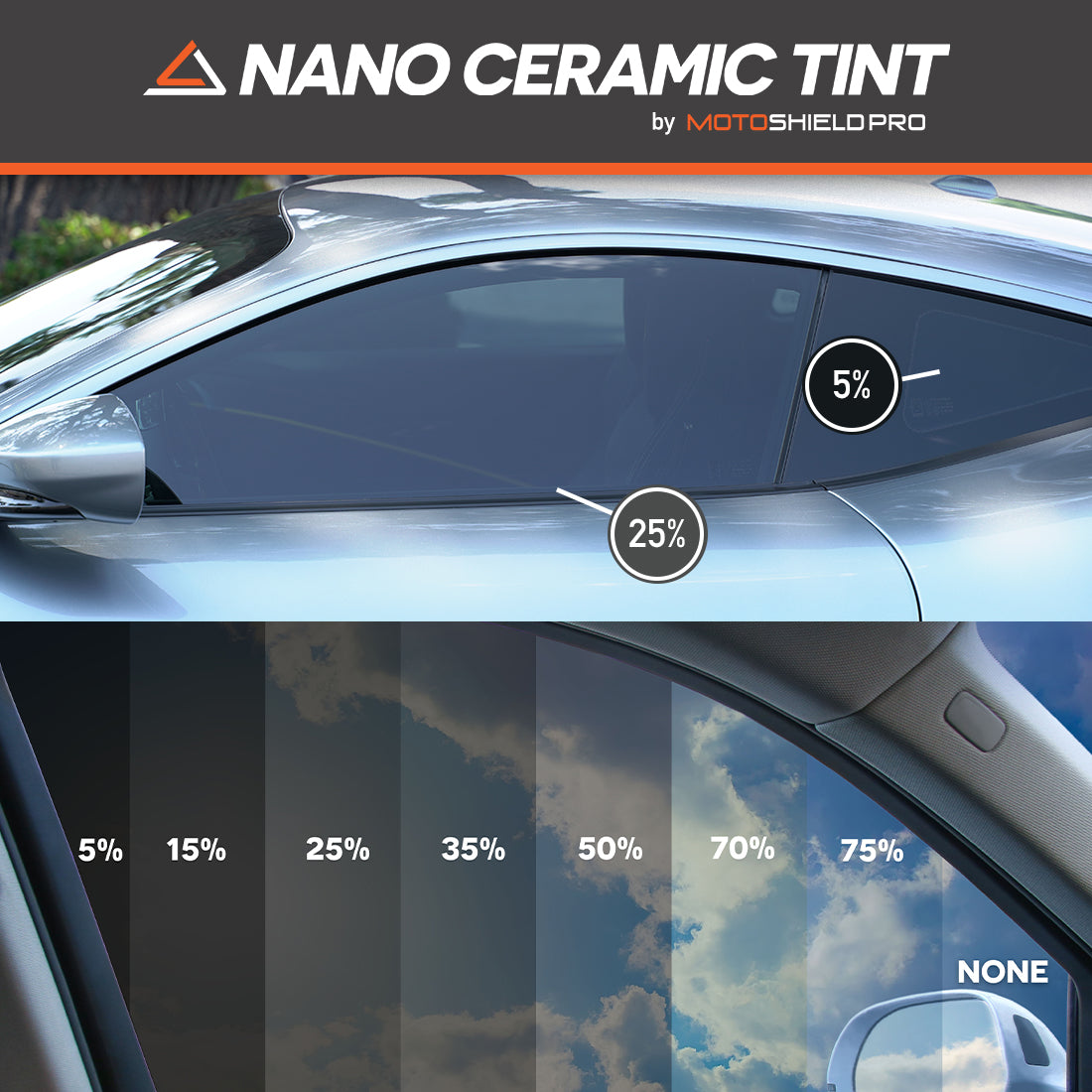Auto Window Tinting: Find the Best Offers and High Quality Solutions Close-by
Auto Window Tinting: Find the Best Offers and High Quality Solutions Close-by
Blog Article
Home Window Tinting Rules and Standards: What You Required to Know Before Tinting Your Car
Before proceeding with home window tinting for your lorry, it is crucial to familiarize yourself with the diverse laws and guidelines that control this technique throughout various states. These policies dictate the permitted degrees of color darkness, frequently measured by noticeable light transmission (VLT) percentages, and include specific stipulations for front windscreens focused on making certain roadway security. Additionally, certain territories may offer clinical exemptions for individuals with certifying conditions. Understanding these complexities can conserve you from possible legal ramifications, however what are the specific rules in your state?
Summary of Window Tinting Regulations
Window tinting legislations are frequently based on variant across various territories, showing regional guidelines and safety considerations. These regulations dictate the permitted degrees of color darkness and reflectiveness on automobile windows, guaranteeing that motorists maintain appropriate presence while also protecting versus unsafe UV rays and warm.
Most regulations categorize home window tinting based on the Visible Light Transmission (VLT) percent, which shows the amount of light that can go through the home window. Generally, reduced VLT portions indicate darker colors. Laws commonly distinguish between the front, side, and back windows, with more stringent restrictions related to the front windshield to enhance safety and security for both the driver and various other road individuals.
Additionally, some territories enforce limitations on the reflectivity of the color, avoiding excessive glow that might impair presence. Exceptions to these regulations may exist for individuals with particular clinical problems requiring extra sunlight protection. Conformity with home window tinting policies is vital, as violations can result in penalties, necessary removal of the tint, and possible rises in insurance costs. Therefore, it is necessary for automobile proprietors to acquaint themselves with local regulations prior to waging window tinting installments.
State-by-State Tint Regulations
Comprehending the certain window tinting policies in each state is crucial for automobile proprietors seeking to adhere to the legislation. Each state in the U.S. has actually developed its very own collection of guidelines governing window tinting, which can vary substantially. These policies usually determine the allowable levels of color darkness, the kinds of windows that can be tinted, and any type of medical exemptions that may use.
As an example, states like The golden state have rigid limitations on tint darkness for front home windows, while others, such as New Mexico, might permit darker tints. Additionally, specific states mandate particular visibility percents for various windows, including the windscreen, front side home windows, and rear home windows. It is vital for car owners to acquaint themselves with their state's regulations to stay clear of potential penalties or fines.
Moreover, some states might require a qualification sticker label to be positioned on tinted home windows, suggesting compliance with state regulations. Failing to stick to these laws not just takes the chance of legal effects however can additionally impact security and exposure while driving. Therefore, automobile proprietors need to carry out extensive research or seek advice from neighborhood authorities to make certain full understanding and conformity with state-by-state tint policies.
Allowed Tint Levels and Types
Several lorry proprietors may be amazed to discover that enabled color degrees and kinds differ extensively across different states. Each state has established its very own regulations relating to the permissible darkness and reflectivity of home window tint, often gauged by Visible Light Transmission (VLT) percentages. VLT refers to the amount of light that can travel through the colored windows; thus, a lower portion shows a darker color.

Moreover, the sorts of color products enabled can differ, with some states prohibiting metal or mirror-like coatings. It is crucial for lorry proprietors to acquaint themselves with their state's details regulations to make sure conformity. Non-compliance can result in fines, necessary removal of the tint, or other legal consequences, making it necessary to recognize these policies before waging setup.
Medical Exemptions for Tinting
While not all states provide allowances for medical exemptions regarding window tinting, those that do acknowledge the need for details people to improve visibility and comfort due to medical conditions. Numerous medical problems, such as lupus, skin cancer, and particular eye conditions, can provide individuals specifically conscious sunlight. Consequently, these people may need darker colors to secure themselves from damaging UV rays and glare.

It is essential to keep in mind that despite having a clinical exception, there might still be restrictions on the level of color enabled. Compliance with state laws ensures that people are both protected and within legal limitations. Those considering clinical exceptions ought to contact their regional Department of Electric motor Vehicles or comparable authority to recognize the procedures and requirements needed to obtain an exception successfully.
Penalties for Non-Compliance
Stopping working to adhere to window tinting regulations can result in significant fines, which vary by state. Police are encouraged to issue citations for lorries that do not stick to the specified tinting policies. These fines commonly consist of penalties, which can vary from small quantities to numerous hundred dollars, depending upon discover here the intensity of the violation and the state concerned.
In some territories, duplicated offenses might cause escalating click this site fines or additional penalties, such as necessary court looks. Additionally, non-compliance may demand the removal of unlawful tinting, usually at the owner's cost. In severe situations, habitual culprits might deal with suspension of their car registration until conformity is achieved.
Additionally, insurance coverage ramifications might develop from receiving multiple citations for home window color offenses. Insurance providers may view such infractions as a sign of riskier habits, potentially resulting in enhanced costs or trouble in insurance coverage.
To avoid these fines, it is vital for car owners to acquaint themselves with their regional window tinting laws and make sure that their car complies (Window Tinting). This aggressive method not only stays clear of lawful ramifications but additionally promotes roadway safety and security
Final Thought

A lot of regulations categorize window tinting based on the Visible Light Transmission (VLT) portion, which suggests the quantity of light that can pass with the window. Conformity with home window tinting laws is essential, as violations can result in fines, required elimination of the color, and potential boosts in insurance policy costs.Recognizing the particular home window tinting regulations in each state is vital for lorry proprietors looking for to conform with the regulation. These guidelines often dictate the allowed levels of tint darkness, the types of windows that can be tinted, and any type of medical exceptions that might use.
For instance, states like The golden state have strict constraints on tint darkness for front home windows, while others, such as New Mexico, might permit darker colors.
Report this page